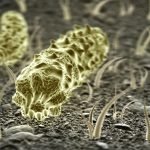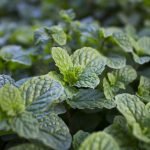Ayurveda and Diabetes Care: A Multifaceted Approach
Virender Sodhi, ND, MD (Ayurved)
The Ayurvedic tradition has much to offer when it comes to diabetes care. Diabetes is a complex condition with devastating and often fatal complications. Every practitioner knows that lifestyle issues must be addressed if the diabetic patient is to live the longest and healthiest life possible. Ayurveda’s four pillar approach, which seeks to balance physical, mental, emotional and spiritual health, offers a centuries-old tradition of integrated, holistic healthcare that modern medicine is only now beginning to fully appreciate.
Today, diabetes rates are on the rise worldwide. The high-stress sedentary lifestyle, over-consumption of refined foods, and lack of understanding of natural health which prevails in modern cultures is putting millions of people at risk. Diabetes ranks as the sixth leading cause of death, and it is the leading cause of kidney failure, blindness and amputations. Diabetics are significantly more likely to develop heart disease and to experience cardiac failure.
In my years of Ayurvedic and naturopathic practice, I have been able to help many diabetic patients reduce or eliminate their need for oral hypoglycemic drugs and insulin by using an integrated approach. This approach combines dietary changes, exercise, and time-tested herbs and supplements. Ayurvedic herbs such as Gymnema sylvestre, Pterocarpus marsupium, and Momordica charantia, have potent blood sugar-lowering properties which have been scientifically verified in clinical trials.
Sustainable blood sugar control is critical to a diabetic patient’s health over time. Often, as a diabetic patient ages, insulin-reducing medications begin to lose their effectiveness. In the absence of tight insulin control, the risk of diabetic complications rises. In my experience, the reason for this phenomenon is two-fold – either the patient’s nutrition is unbalanced and deficient, or the patient does not exercise. There is a saying in Ayurveda – “If you walk ten miles a day, the diabetes will run away.” Studies have proven that diabetic patients who walk briskly for 45 minutes a day have much better insulin control than patients who do not walk. In both type 1 and type 2 diabetes mellitus, exercise can increase insulin sensitivity, lower blood glucose, and have positive psychological effects. Regular physical exercise can also reduce hypertension and normalize lipids.
Nutritional changes are equally essential to improvement in health. Obesity is now understood to be the single highest risk factor for type 2 diabetes. More and more children are now being diagnosed with this metabolic disorder. In my view, the typical American diet bears the blame for this phenomenon. Insufficient intake of fruits and vegetables, the replacement of whole grains with refined products with much of their nutritional value stripped away, and overconsumption of refined sugar make the American diet possibly the worst in the world.
In the book Western Diseases: Their Emergence and Prevention, first published in 1981, Denis Burkitt, MD and Hugh Trowell, MD suggested that chronic disease rates are integrally connected to diet. As traditional, healthy diet devolves into the over-processed, high-sugar, high-fat modern diet, chronic diseases such as heart disease, cancer, osteoarthritis, rheumatoid arthritis, gout, auto-immune disorders and more become extremely common.
I strongly stress good diet and nutrition with my diabetic patients. I recommend 5-7 servings of vegetables each day, emphasizing green, leafy, cruciferous vegetables and those with a lower glycemic index. Healthy oils such as olive, flax seed, macadamia and even ghee (clarified butter) should be included. Oils have a wonderful phenomenon of curbing the appetite and slowing down the sugar absorption from the gastrointestinal (GI) tract. In my opinion, healthy oils should be used on top of soup, bread, and salads, or put into smoothies rather than cooking with them. Even light frying should only be done with saturated fats like ghee and coconut oil, as these oils have a high heat tolerance and do not become rancid. Another method of taking oils is through using unsalted nuts and seeds, which can be soaked to unlock their germinating power. Germinating nuts and seeds releases their life force and supplies essential digestive enzymes. Remember, oils are rich in calories and should be used in moderation. Beans are my favorite in achieving perfect glycemic control. There are 700 varieties of beans eaten all over the world. If you start eating one new bean type each day, it will take two years before you come back to ones you’ve already eaten. One of my favorite beans is the black chickpea, or kala channa. It has very a low glycemic index and can be cooked in many ways. A healthy diet should also include 3-5 servings of whole grains per day.
In addition to dietary changes and exercise, I have found the following Ayurvedic herbs invaluable in helping my diabetic patients achieve blood sugar control:
Gymnema sylvestre
The literal meaning of Gymnema sylvestre is “destroyer of sugar”. For centuries, Ayurvedic practitioners have understood this herb’s power to reduce blood sugar, and clinical trials have confirmed this activity.
When Gymnema sylvestre was given to patients with type I diabetes, both insulin requirements and fasting blood sugar levels were reduced. Some patients with type 2 diabetes who were given the herb were able to completely discontinue oral hypoglycemic drugs, while others were able to reduce their dosages considerably. No side effects have been noticed in therapeutic doses of the herb (Baskaran et al., 1990; Shanmugasundaram et al., 1990). Gymnema also improves blood lipid profiles. For my diabetic patients, I recommend 300-900 mg of a standardized extract of Gymnema TID before meals.
Momordica charantia
Momordica charantia, known in Ayurveda as karela, offers many benefits to the diabetic patient. In some studies, karela extract has shown more hypoglycemic effects than the drug tolbutamide. Karela also contains an insulin-like polypeptide and causes fewer side effects than insulin. Oral administration of karela juice has been shown in clinical studies to improve blood sugar levels and lower the levels of glycosylated hemoglobin (Ng et al., 1986). M. charantia also enhances glucose uptake. I recommend 50-100 mg of standardized extract TID before meals.
Pterocarpus marsupium
Another great herb for diabetes control is Pterocarpus marsupium. This herb works particularly well with type 2 diabetes. Two clinical studies using human subjects, have shown Pterocarpus marsupium to have remarkable anti-diabetic action. In both studies, patients were given no treatment other than an herbal extract. The first study evaluated both newly-diagnosed and untreated type 2 diabetics. Ninety-seven patients were given Pterocarpus marsupium extract at doses ranging from 2 to 4 gm per day over a period of 12 weeks. Sixty-seven percent of the patients were able to reduce and maintain glucose levels with the herbal extract. Of this group, 73% showed stabilized glucose levels at daily doses of 2 gm extract, whereas 16% required 3 gm per day and 10% stabilized at 4 gm per day (Indian Council of Medical Research, 1998). Study participants also experienced improvements in common diabetic symptoms. No adverse side effects were reported during the treatment period.
In another study, 22 diabetics, mostly with type 2 diabetes, ranging in age from 29 to 70 years old, were given a decoction of either two or four ounces three times daily made from 36 or 72 grams of dry bark of Pterocarpus marsupium for 7 days (Pandey and Sharma, 1975). All of the study participants showed significant improvements in diabetic control.
Cinnamonum spp. and Trigonella foenum-graecum
Diabetic patients can also benefit from adding therapeutic spices to their diet. Two excellent anti-diabetic spices are cinnamon bark and fenugreek seeds. I recommend adding 1-6 gm of cinnamon powder and 15 gm of fenugreek every day with food.
Cinnamonum has many therapeutic uses. It has been shown in human studies to decrease serum glucose, LDL cholesterol and triglycerides. In animal studies, Cinnamonum extract improved insulin action by increasing glucose uptake in muscles.
Research scientists at India’s National Institute of Nutrition discovered that ground fenugreek seeds reduced fasting blood sugar levels in patients with type 1 diabetes (Vijayakumar et al., 2008; Carper, 1994). Fenugreek has also been shown to decrease blood glucose, LDL cholesterol, VLDL cholesterol and triglycerides.
Case Study
A 63-year-old male came to my clinic with a diagnosis of type 2 diabetes, hyperlipidemia and transaminitis. He was put on Ayurvedic nutrition, along with exercise, yoga and herbal supplementation. The patient’s glycosated hemoglobin fell from 10.6 to 6.2 in four months, lipids normalized with a 15% increase in HDL and liver enzymes reverting back to normal in four months. Diabetes is a serious disease and lifestyle must be adjusted permanently. Ayurvedic and naturopathic traditions offer valuable options for the diabetic, allowing them to drop or reduce their dosages of hyperglycemic medications considerably. Overall, diabetic patients in my practice have reduced their need for insulin between 25% to 75% using a balanced approach involving diet, exercise, and supplementation.
 Dr. Virender Sodhi is an internationally respected Ayurvedic and Naturopathic physician, and one of the first to practice Ayurvedic medicine in the US. Dr. Sodhi received his MD (Ayurveda) after completing six years of medical training in India. He came to the US in 1986 to share Ayurveda as part of a cultural exchange program. In 1988, Dr. Sodhi graduated from Bastyr University. Dr. Sodhi treats patients from all over the world at the Ayurvedic and Naturopathic Medical Clinic in Bellevue, Washington. He also lectures extensively throughout both the U.S. and other countries, and is the founder of Ayush Herbs, Inc.
Dr. Virender Sodhi is an internationally respected Ayurvedic and Naturopathic physician, and one of the first to practice Ayurvedic medicine in the US. Dr. Sodhi received his MD (Ayurveda) after completing six years of medical training in India. He came to the US in 1986 to share Ayurveda as part of a cultural exchange program. In 1988, Dr. Sodhi graduated from Bastyr University. Dr. Sodhi treats patients from all over the world at the Ayurvedic and Naturopathic Medical Clinic in Bellevue, Washington. He also lectures extensively throughout both the U.S. and other countries, and is the founder of Ayush Herbs, Inc.
References
Baskaran K, Kizar Ahamath B, Radha Shanmugasundaram K, Shanmugasundaram ER J Ethnopharmacol 1990 Oct;30(3):295-300 – Antidiabetic effect of a leaf extract from Gymnema sylvestre in non-insulin-dependent diabetes mellitus patients.
Shanmugasundaram ER, Rajeswari G, Baskaran K, Rajesh Kumar BR, Radha Shanmugasundaram K, Kizar Ahmath B. Use of Gymnema sylvestre leaf extract in the control of blood glucose in insulin-dependent diabetes mellitus. J Ethnopharmacol. 1990 Oct;30(3):281-94
Ng TB, Wong CM, Li WW, Yeung HW 1986 Insulin-like molecules in Momordica charantia seeds. Journal of Ethnopharmacology 15(1):107
Indian Council of Medical Research. Flexible dose open trail of Vijayasar in cases of newly-diagnosed non insulin dependent diabetes mellitus. Indian J Med Res 1998 Jul;108:24-9.
Dr. MC Pandey, Prof. PV Sharma. Hypoglycemic effect of bark of pterocarpus marsupium roxb. The Medicine & Surgery 15 November 1975 p. 21-23.
Vijayakumar MV, Bhat MK. Hypoglycemic effect of a novel dialysed feungreek seeds extract is sustainable and is mediated, in part, by the activation of hepatic enzymes. Phytother Res. 2008 Apr;22(4):500-5.
Carper, Jean: Food–Your Miracle Medicine: How Food Can Prevent and Cure Over 100 Symptoms and Problems By Jean Carper Published by HarperCollins, 1994, p. 423.










